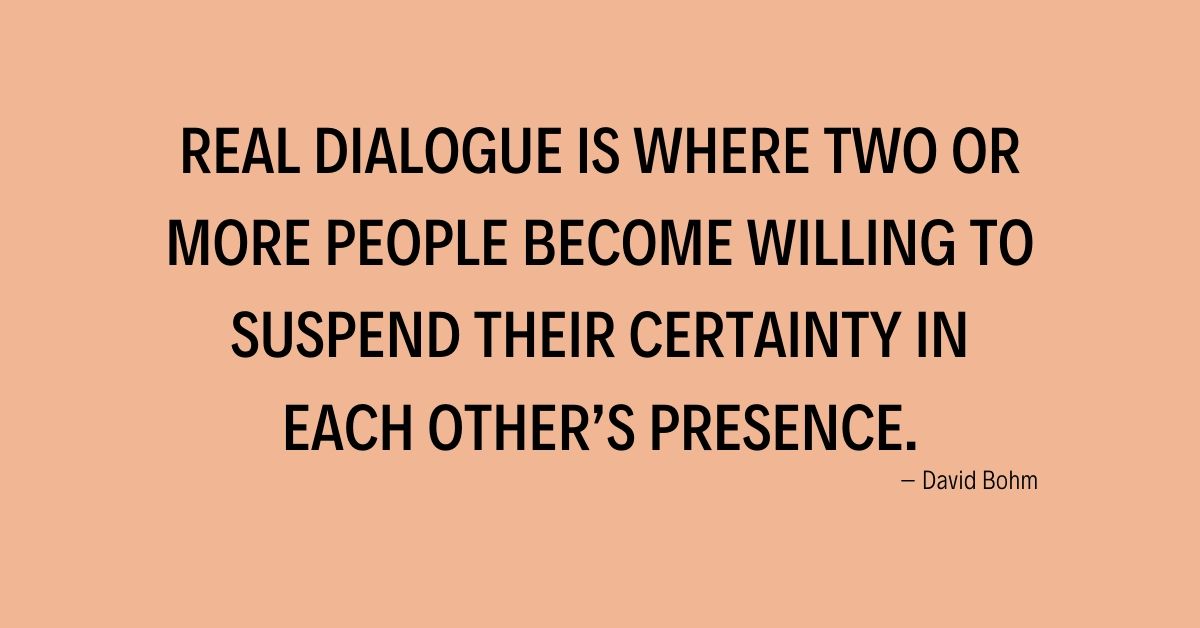To read further in this article, one first needs to know the difference between these two concepts: monologue and dialogue.
Monologue is typically a tedious speech said by one person during a conversation; An absence of interaction.
At work, this is when someone talks to you.
In contrast, a dialogue is a conversation between two or more people.
When someone talks with you.
Talking with someone means that everyone involved in the conversation is prepared to listen.
While this is evident in all areas of life, for this situation, let’s mix those in leadership positions into the equation.
Do those in leadership positions hold conversations with you or do they do all of the talking?
Leaders, who do all of the talking and don’t hold dialogues with their employees, teams, or coworkers can’t actually be leading because they aren’t listening to what others have to say.
Smart people want to be a part of the conversations and not talked at.
It’s not about telling someone what they need to do, but describing, explaining, and evaluating the situation, together. In doing so, ideas, concerns, and/or questions may arise that were not otherwise considered.
People may think that they are engaging in a dialog when they are really engaging in individual sessions of monologue.
Two or more people speaking in monologue, doesn’t make a dialogue.
What about a discussion?
Discussions are similar to that of a debate, whereas ‘dis’ means apart.
Therefore, dialogue is a process that allows people, in a sense, to “think together.”
A good leader holds conversations, has dialog, and talks and listens with other people.

